This post is a follow up to a presentation I gave at the China Marketing Summit in Shenzhen last month. The main premise was to give an overview of how to get started building an audience and sales with Facebook ads.
Channels like PR and SEO are amazing long-term plays but if you’ve only got a few months to demonstrate some growth in a brand-new business, they’re unlikely to meet the challenge in time.
I believe this is where Facebook really plays to its strengths. When a business needs a cost effective and highly measurable route to growth, I believe Facebook is a great option for meeting that challenge.
To summarise the main benefits:
- It’s highly likely that your audience are there
- With the right product, served to the right audience, at the right time – the ROI can be great
So, tasked with achieving this for a new business where should you start?
Let’s say for example you’ve been hired by a brand new luxury travel startup to achieve the following:
- Increase Sales Leads (Increase lead volume, reduce CPL, reduce non-converting traffic)
- Grow An Engaged Audience (Grow email list, increase engagement, build targeting remarketing lists)
Here’s what I’d do!
Objective One: Drive Leads
The key thing here is that we need to start testing out what works, and by ‘works’ in this case we mean what is going to drive profitable quality leads at the right volume.
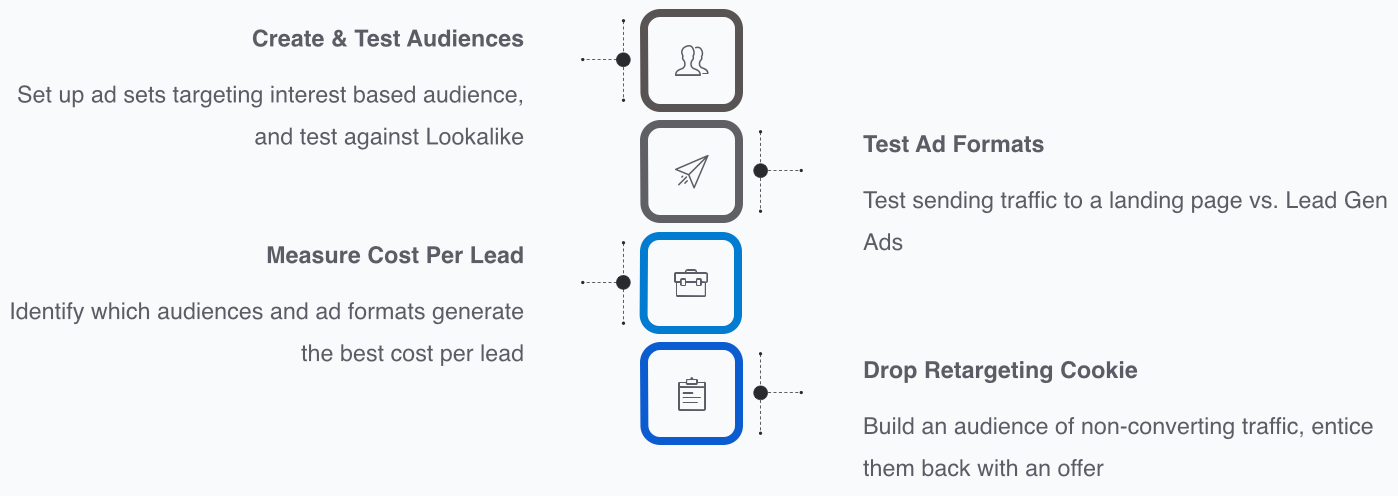
Test a couple of Audiences:
To get started, we’re going to try two ad sets with the following audiences:
- An interest based audience targeting people who we believe are most likely to be interested in our service
- A lookalike audience based on a list of people that have previously converted
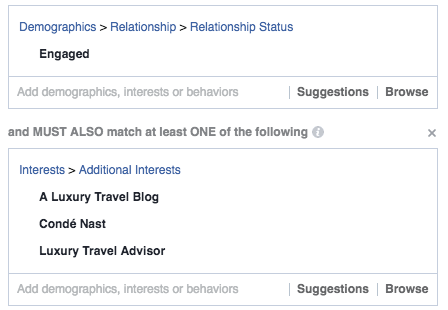
An interest audience is usually the place where most people start, but it can be super hard to get the combinations right. Depending on your business and audience demographics some cases will be far harder than others.
Taking the fictional brief into consideration we’re going to target people who live in our key market, are interested in luxury travel publications, and who are also engaged to be married. The theory here is that they are browsing related content, and due to their relationship status at some-point in the near future may be looking to book a honeymoon.
When it comes to the lookalike audience, we have a few different options of seed data. This could be website traffic, or it could be another form of custom audience. By using a customer list of past converters we’re essentially telling Facebook to match the demographics and behaviours of those people to make a larger audience of people who are likely to convert.
By using two ad sets, one for each audience, we can test the results to see which one works best.
Testing Ad Formats
At this stage it is also sensible to start testing ad formats and creative. Given that we’re looking to drive valuable leads for the business, the plan is to test a standard ad format to drive traffic to a landing page, vs. a lead gen ad to collect leads directly.
A word of warning here – it’s super important to collect feedback from your sales team on the quality of leads. What I’ve seen many times in the past is that lead gen ads create an excellent volume of leads at a low CPL, however because of the ‘ease’ at which people can fill out the form, the quality of those enquires isn’t always amazing.
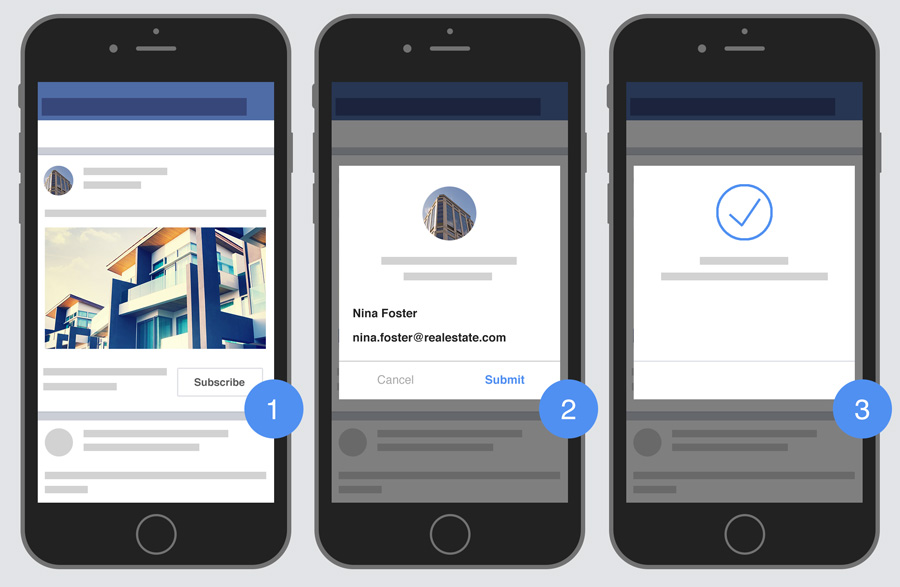
What we’re essentially testing is whether or not a landing page with full details of your service does a better job of pre-qualifying the lead. Other things you can test for improving lead quality include the copy and imagery in the form, the questions you ask and so on but the big ‘lead form vs. landing page’ is where to start.
If you do go ahead and use the lead gen ads then you’ll need to get a mechanism in place to collect feedback on the quality they produce. To do this, you can make use of Zapier to link up your lead gen forms with Google Docs, Mailchimp or your client’s CRM system.
If your client doesn’t have a sophisticated CRM in place, I’ve found a shared Google Doc where the sales team can mark off progress (such as which leads have progressed to proposal) as a good way of understanding quality.
Objective Two: Grow Your Audience
Rather than focus on a direct increase in sales, the objective here is to grow a pre-qualified audience for the future. Like any investment, we’re building something that will (hopefully!) provide a positive return in time.
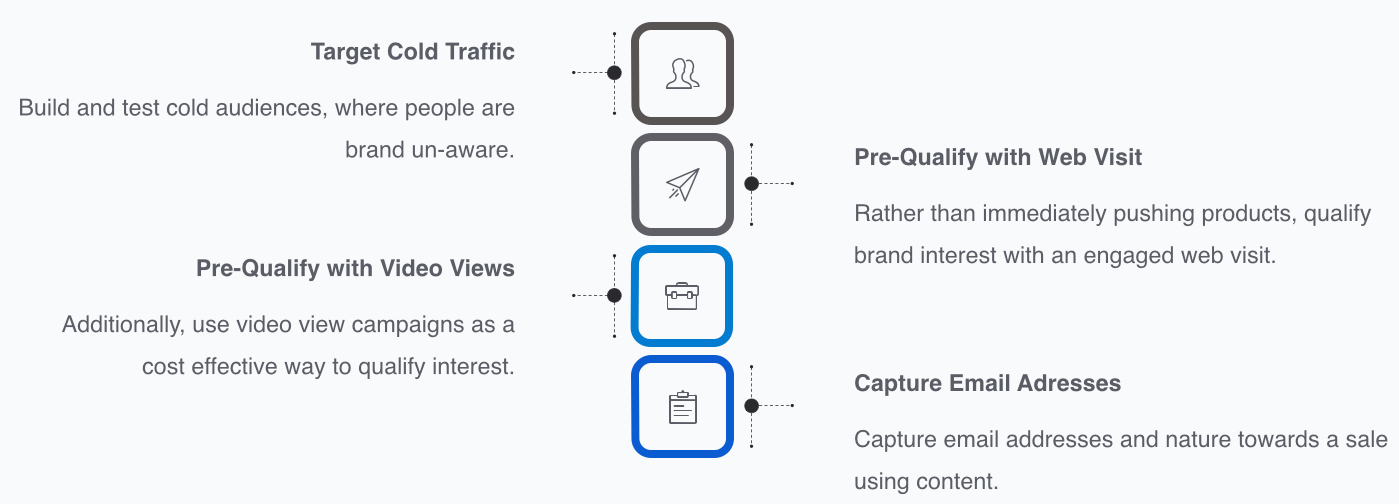
Imagine you need to promote an event or offer 2-months down the line, how much easier would that be if you’ve already got a sizeable audience in your back pocket? That’s what we’re getting at here.
Promoting Content, Not Products to a Cold Audience
The first point of call here is going to be promoting a base of content to a cold audience, and then using engagements with that content to create a remarketing list for future use. To get this moving, we’re going to get the following three items arranged:
- A cold interest based audience of people we believe are going to be most interested in our content
- A new custom audience for anyone who has interacted with the blog section of our site more than twice in the last 30 days
- Ad creative to promote your content
When it comes to the website custom audience, I’ve found that refining the audience by frequency (i.e how many times someone has viewed a specific part of your site) means you’re picking out the best of your potential audience. The theory being, if someone has viewed your content more than twice in a specific period, they know the brand and appreciate what you’re doing.
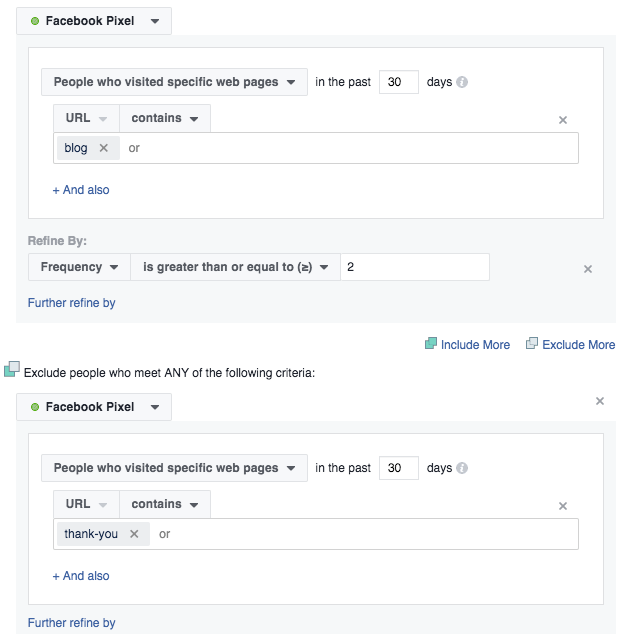
Regarding ad copy, I have personally found carousel ads promoting multiple pieces of content work well. Of course, you should definitely test this out against a single image ad to see what works best for your audience.
Pre-Qualify via Video View Campaigns
Essentially, we’re adding in new step here, but the theory is the same – how can we use content to pre-qualify brand interest, and save that audience for future use?
The benefit with video campaigns is that they’re super cheap to run and every 3-second video view classifies as an entry onto a remarketing list. With video views of less that 0.5p you can see how quickly this can scale.
You have the option to build a list of anyone who has viewed the video (for at least three seconds) or people who have viewed 25%, 50%, 75%, 90% and 100% of your video – you have to make a call on what percentage of a full view determines genuine interest.
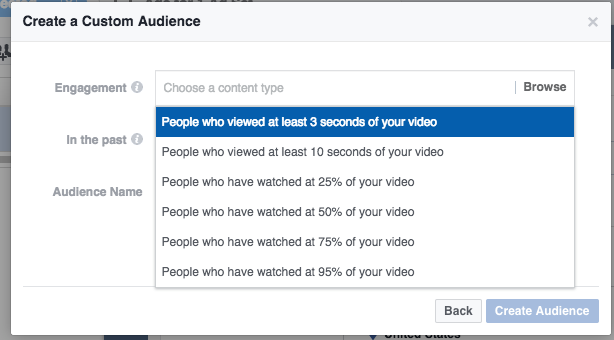
Depending on how you want to structure your campaigns, you could use this tactic instead of promoting your blog content, or you could test a combination of sending people who have viewed your videos to your blog as a secondary stage of qualification. The key is to test and find out what works best for you.
Obviously the two objectives outlined in this post can be combined very effectively to create an ever-increasing funnel.
Email Sign-up Ads Followed by Content Nurturing
Unlike a direct sales campaign where you would follow up with leads as sales prospects, what we’re talking about here is running lead gen ads and then nurturing people through a program of content to a point at which they are warmed up to the brand.
Generally speaking, this process looks a bit like:
- Run Lead Gen Ads – Either to a cold or pre-qualified audience
- Send Auto-Response – Onboard with an overview of content and value adding information
- Nurture – Keep the focus on content for the initial few weeks
- Sell – Once ready, start gently introducing commercial offers
The above can be achieved easily using Zapier to connect your lead forms to your CRM or email software of choice.
It goes without saying that you’ll need a very high standard of content to make this happen. Right from the ‘hook’ you’re offering to convince someone to sign-up in the first place, through to the content you’re going to be sending out, whether this works or fails is determined by the content.
Hope this proves to be a useful overview of how I would approach a new campaign set up. Obviously there are a huge number of things to test and optimise, but as a starting point the above should be a good start.



